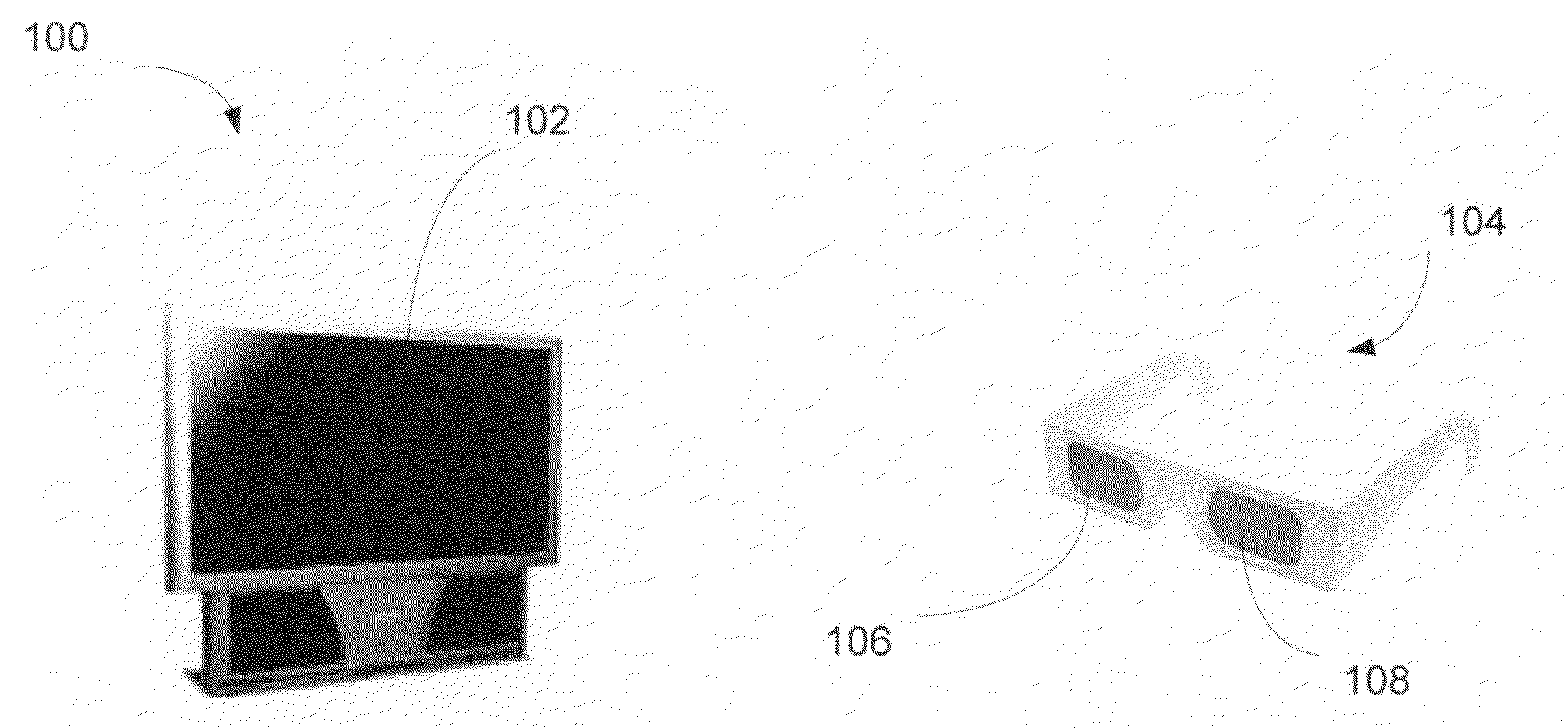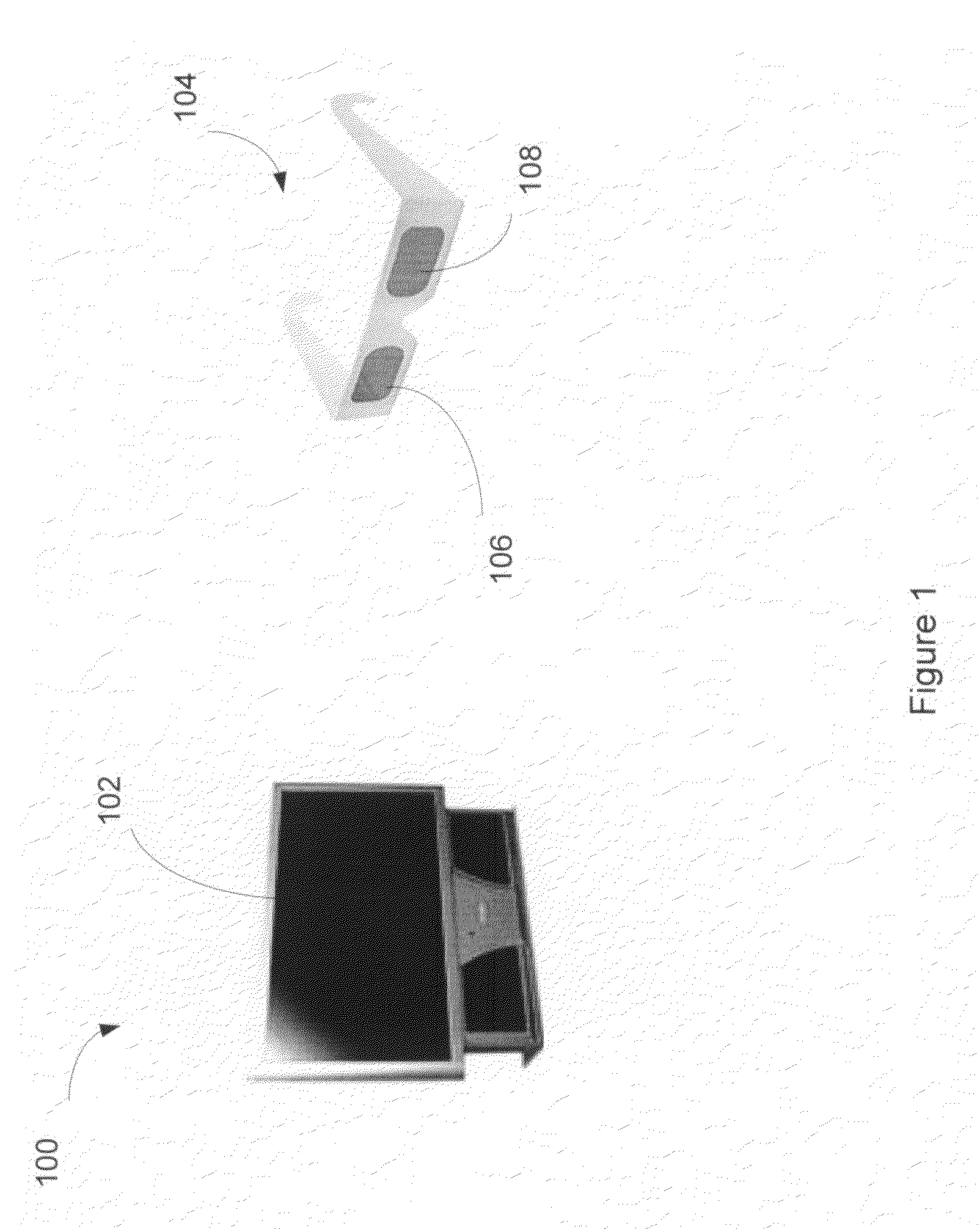3-D projection full color multimedia display
a multimedia display and 3d projection technology, applied in optics, instruments, electrical equipment, etc., can solve the problems of poor quality, impaired 3d effect, unappealing to the typical consumer,
- Summary
- Abstract
- Description
- Claims
- Application Information
AI Technical Summary
Benefits of technology
Problems solved by technology
Method used
Image
Examples
Embodiment Construction
[0024]To provide an overall understanding of the invention, certain illustrative embodiments will now be described, including various apparatus and methods for forming three-dimensional images. However, it will be understood by one of ordinary skill in the art that the apparatus and methods described herein may be adapted and modified as is appropriate for the application being addressed and that the systems and methods described herein may be employed in other suitable applications, and that such other additions and modifications will not depart from the scope hereof.
[0025]Systems and methods are described that can be used to produce a full-color projection image on a non-polarization maintaining screen, such as a RPTV. The systems and methods are based on the concept that almost any point in color space is accessible by a combination of three distinct colors, red (R), green (G), and blue (B). An additive color system involves light emitted directly from a source or illuminant of s...
PUM
 Login to View More
Login to View More Abstract
Description
Claims
Application Information
 Login to View More
Login to View More - R&D
- Intellectual Property
- Life Sciences
- Materials
- Tech Scout
- Unparalleled Data Quality
- Higher Quality Content
- 60% Fewer Hallucinations
Browse by: Latest US Patents, China's latest patents, Technical Efficacy Thesaurus, Application Domain, Technology Topic, Popular Technical Reports.
© 2025 PatSnap. All rights reserved.Legal|Privacy policy|Modern Slavery Act Transparency Statement|Sitemap|About US| Contact US: help@patsnap.com



